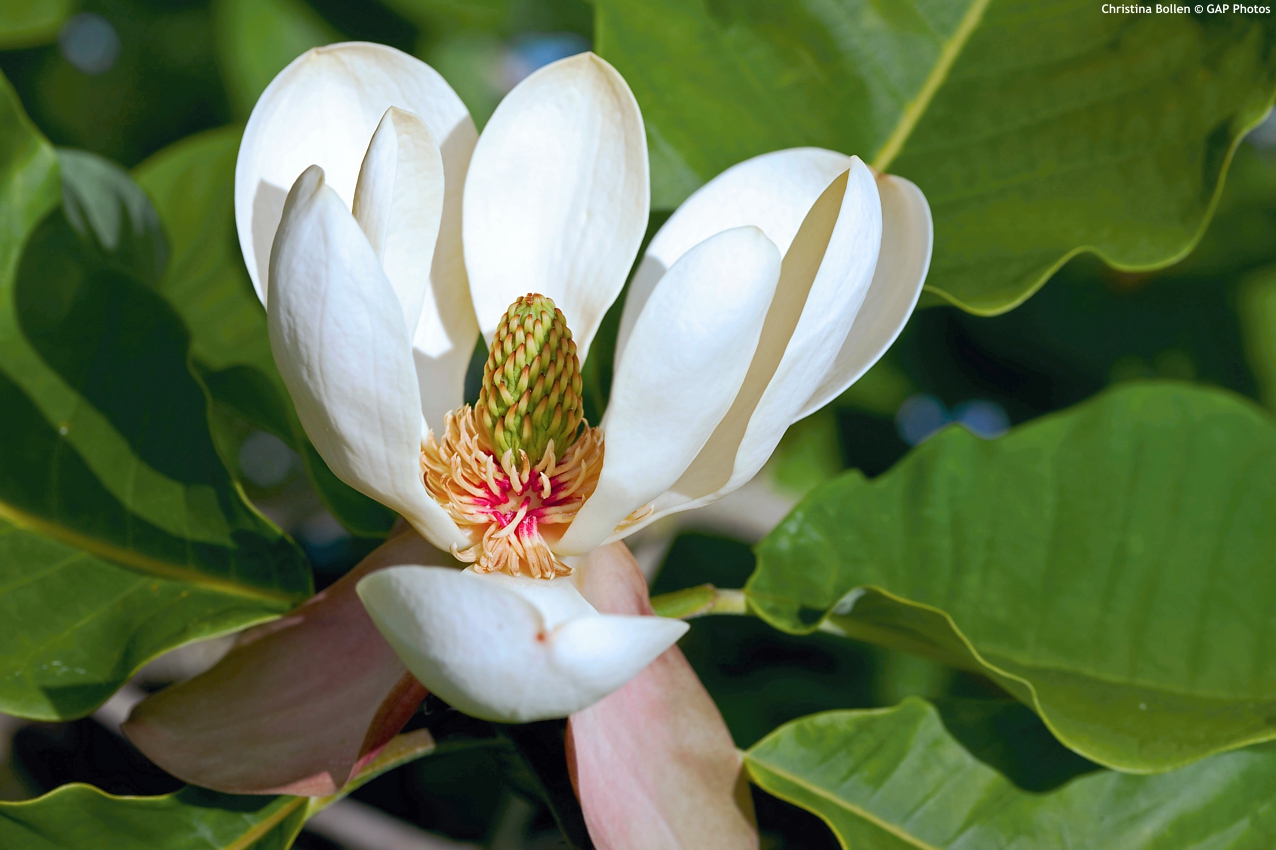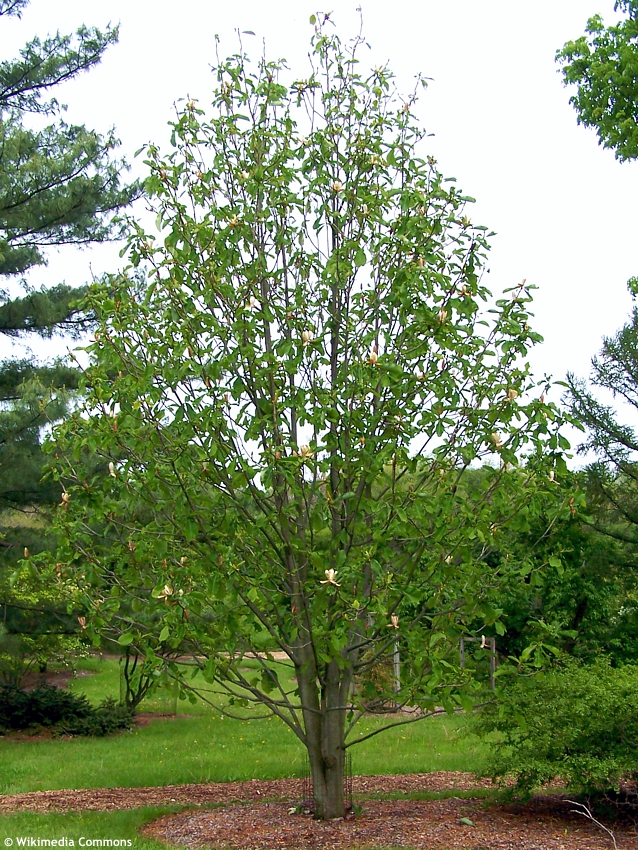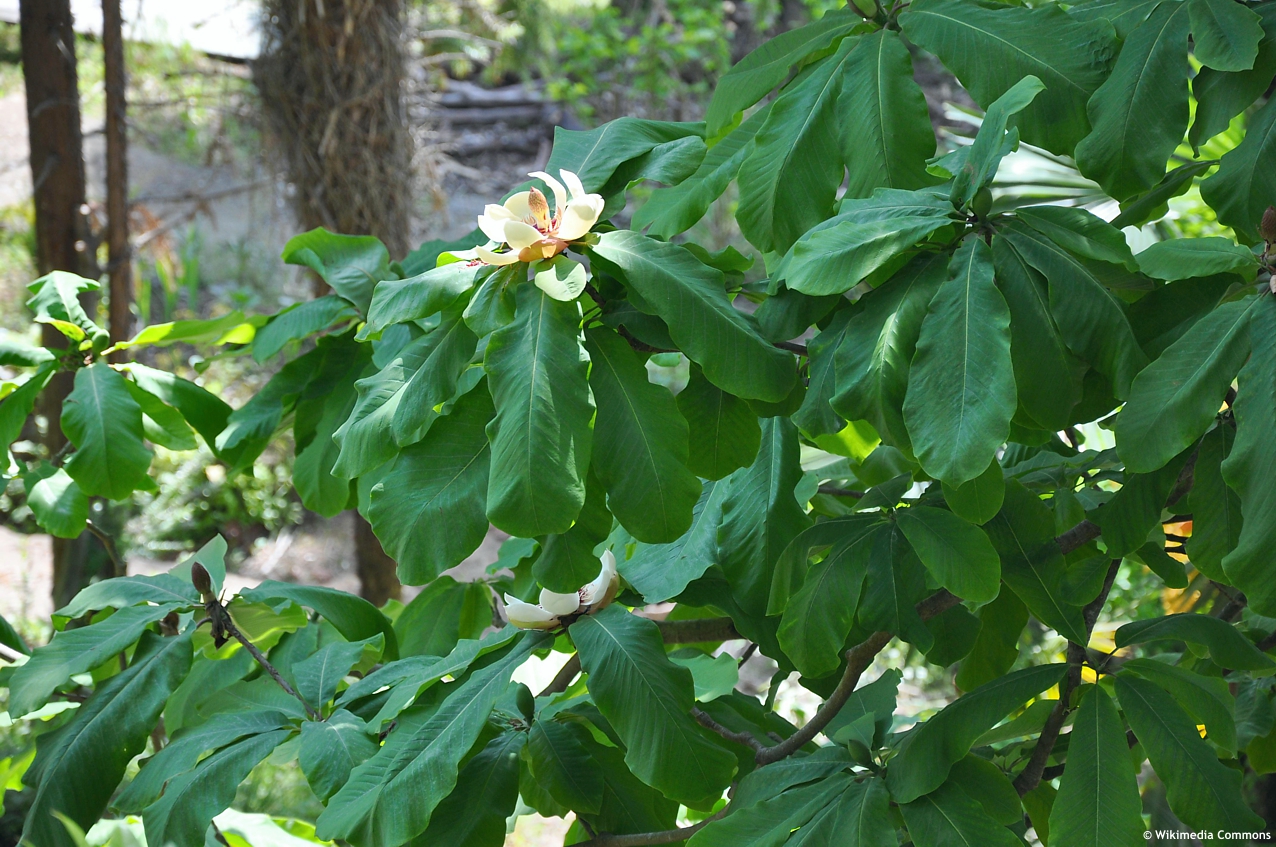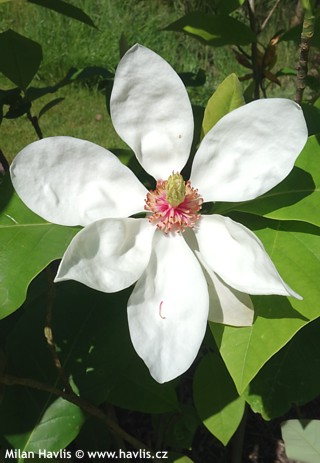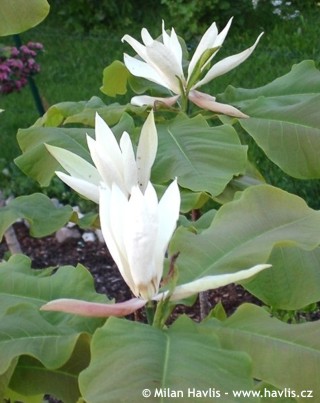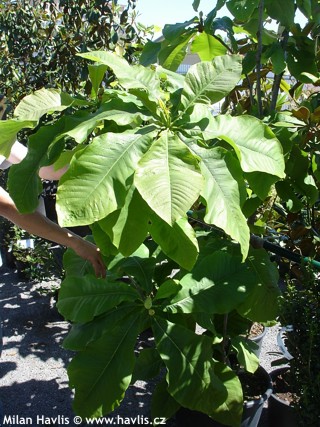Magnolia officinalis Houpu magnolia
size/type
medium-sized tree,tall tree
usual height
10-20m
usual width
4-6m
leaves
deciduous broadleaf
colour of leaves
flowers
showy
colour of flowers
blooming time
May-June
location
full to partial sun
soil type
acidic (peaty)
soil moisture requirements
evenly moist (dislikes drought)
USDA zone (lowest)
5 (down to -29°C)
winter protection
for zone 5+6

for zone 7

categorized
Description of the plant:
Houpu magnolia is a rare taxon native to Chinese hills and mountains formerly found at altitudes of 300-1500 m. It is distinguished by large leaves and fragrant white flowers on fully leaved-out plants. Flowers are creamy-white to pale butter-yellow, 10-14 cm across, petals are boat-shaped, and centres are decorated with numerous beige stamens with carmine red bases around the pistil base just like bull bay (m. grandiflora). Pollinated flowers are followed by large seedpods holding scarlet red, glossy seeds. Giant foliage resembles m. tripetala and m. obovata, and some botanists even believe that m. officinalis might be a subspecies of the latter rather than a separate species. The leaves are enormous: 20-40 cm long, 10-20 cm wide, deciduous, medium green is spring and summer, flushed coppery red as they emerge, turning amber and yellow in autumn, margins slightly inwardly curved, and partially weeping like dogwood leaves. They are clustered in sets of 7-9 at the tips of the branches, just beneath the flower buds, looking like an umbrella.
Houpu magnolia is a large, long-lived tree of slender, narrowly oval habit, reaching 10-20 m tall (depending on root space). For its remarkable health benefits it has been used in traditional Chinese medicine for centuries. First its flower buds would be harvested, but soon it was discovered that the bark and roots had similar contents and provided more mass. Rapidly increasing demand and imprudent harvesting caused extinction of the species in the wild and this magnolia is now cultivated only horticulturally and on pharmaceutical plantations, though those trees might in fact be cultigens (selections) rather than the original taxon.
Magnolias are not supposed to be pruned. You can prune old shrubs if ill, or trim them to shape or to reduce size, or make an elementary cut to young plants of unsightly or unhealthy appearance. Do this as soon as possible after flowering to secure setting of flower buds for the following year. Be aware that each magnolia can respond differently to pruning.
Deciduous magnolias are quite easy plants. All they need is light, well-drained, acidic soil with equal moisture throughout the year. Once established they can do with occasional drought but will not look as nice as the ones with regular watering. Just pay attention to how you plant your magnolia. First, find it a spot where it will live forever and ever. It does not like transplanting. And as it makes shallow roots reaching well over its spread, stay away from disturbing the roots by digging or messing about around it. Just cover the soil with bark mulch and do not plant anything else near it after say the second year after planting onwards. You could damage the important top roots that absorb maximum moisture and nutrients from the soil. Also avoid planting magnolia too deep. Thus, you could be digging it a grave. It requires more moisture or increased air humidity compared with other magnolias. Though hardy to about -30 °C (USDA zone 5) it needs a location protected from strong winds that would damage its large leaves.
Last update 16-12-2020
QUICK PRICE OVERVIEW
CURRENTLY SOLD OUT
WANT TO TRY A SIMILAR PLANT?













